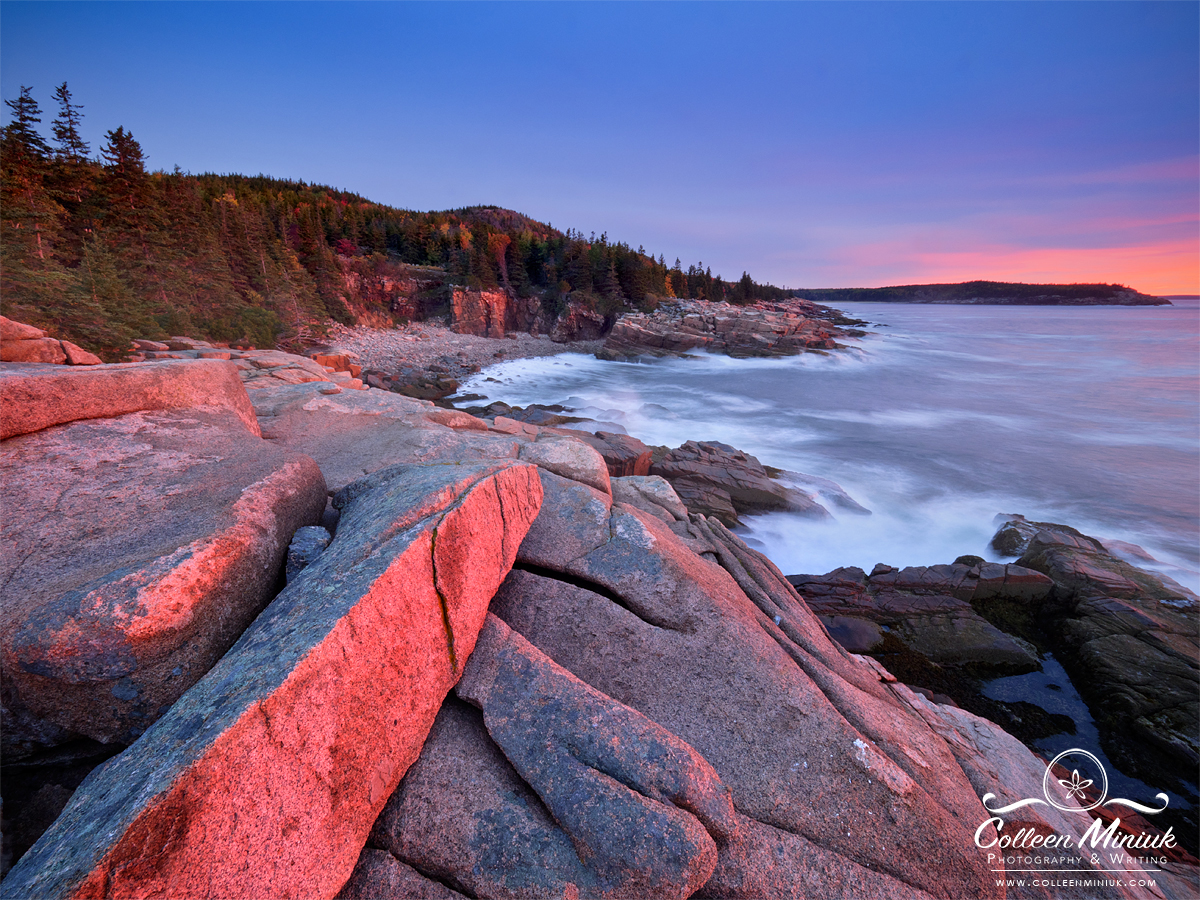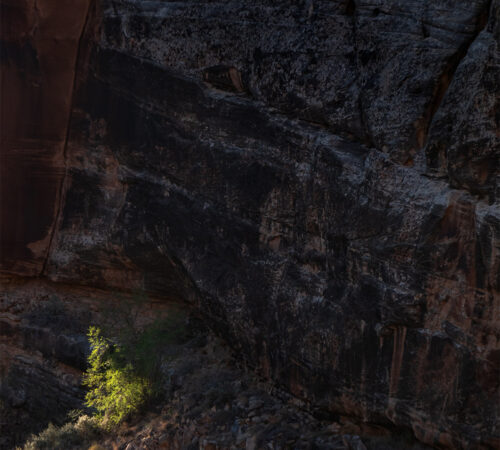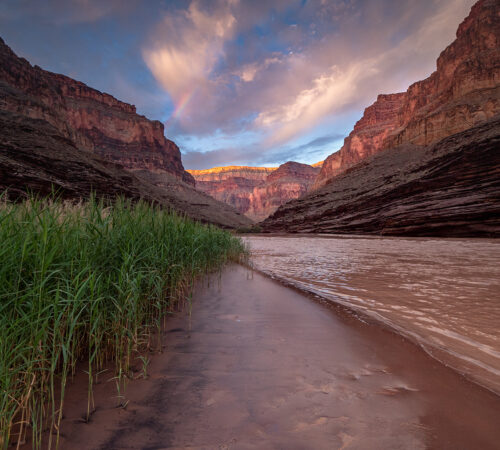Picture Your Picture

Dear Bubbles:
I think that much of my issues is that I don’t shoot enough. Since it’s not my job right now and there’s a lot of life interference, I think that I spend a lot of time re-learning the finer details [of photography] once I’m in the field. As long as I’m employed full-time, I think that may continue to be an issue—if you know or feel otherwise, I would love your insight.
~Cynthia
Dear Cynthia:
While working full-time as a software engineer and project manager at Intel Corporation, I remember the higher-ups touting the idea of finding “work-life balance.” In other words, employees should somehow find time and energy, between sleeping, eating, taking care of family, attending to other commitments, and working 60-plus-hour work weeks, to experience enough joy and fulfillment outside of work to make going back to work somehow more palatable. I never understood this. But it did encourage me to pick up a camera for the first time. (Eventually, it also encouraged me to find a new career…)
The only trouble? I could only get out into the field on the weekends (so long as I wasn’t needed in the office). And by the time those days rolled around, I was mentally and physically exhausted. I couldn’t remember what my photography instructors had talked about the week before. I couldn’t remember which button did what. Every time I picked up the camera, I felt like I was starting over.
So, Cynthia, I understand your situation. As we tend to our life responsibilities and other demands, it’s easy to lose focus (pun intended) on our photographic skills. This can lead to feeling like we’re frustratingly out of balance. Hearing advice like “just set aside time during each day to go photograph” only seems to add to the pile of stress. Who has time and energy for that? Once we do find the motivation to finally get out there, we discover just how rusty we are. Oftentimes, we’re our own worst critic so instead of accepting our current state, we start to judge—even berate—ourselves for not doing a better job which only adds insult to injury. Not exactly a cycle of encouragement. Photography is supposed to be fun, right?!
First things first, cut yourself some slack. Be kind to yourself. You’re working hard and doing the best you can given the cards you were dealt.
Second, I don’t see relearning the finer details as an issue. It’s exactly what’s required to set a new skill into your muscle memory. Malcom Gladwell, in his book Outliers, suggested it takes 10,000 hours of intentional practice in order to master a skill. Gladwell’s number has been disputed by other researchers—some say it’s more, some say it’s less, others say things like the capacity to learn, memory, previous experiences, and even lucky breaks factor into this formula. The exact number of hours required is irrelevant. Researchers do agree that some form and amount of practice leads to expanding our abilities. No one comes out of the womb knowing how to drive a car, launch rockets, or perform open heart surgery. We have to practice to learn how to do these things. Photography is no different.
So shift your expectations: instead of feeling down and frustrated about having to repeat something over and over, celebrate that in doing so, you’re another step closer to achieving competency. Break out the bubbly! Release expectations that you should be in a different place or at a different level than you are. You’re right where your path has led you—for better or worse (and judging it only puts unnecessary obstacles in your way forward). Embrace and enjoy the learning process.
Now, let’s say you pulled your camera out, traveled to some scenic location close to home right after work, and drilled yourself for an hour a day on depth of field (I’m picking on depth of field–replace it any concept you wish). According to Gladwell’s theory, it would take 27.4 years to finally get a handle on depth of field…
I can hear the groans now. Yes, I know. That’s a loooooooooong time. I’m not going to let you turn your camera into a doorstop just yet, though. So stay with me.
What if I told you there was a way for you to practice your skills without touching a camera and without traveling to some scenic locale? That you could improve your photographic abilities right from the chair you’re sitting in now while reading this post—at home, at work, anywhere?
Well, today’s your lucky day! There is! It’s called visualization.
Merriam-Webster defines visualization as “the act of process of interpreting in visual terms or in putting into visible form.” Renowned photographer Ansel Adams suggested it’s “the entire emotional-mental process of creating a photograph…the ability to anticipate a finished image before making the exposure so that the procedures employed will contribute to achieving the desired result.” However you slice it, it’s using your imagination to picture a picture.
I started visualizing—without knowing that’s what it was called—while sitting in my cube staring at the blue-grey walls wishing I was somewhere else. I imagined standing at the edge of the Grand Canyon watching light dance on distance cliffs and the sky turn pink after sunset. I thought about the smells and sounds of the ocean waves along the Oregon Coast. I transported myself to scenes I would hopefully one day experience on my own and photograph. Today, I use a formal visualization-driven approach to guide the creation of my images in the field. I also continue to use the process to help me refine my technique and artistic tastes when I’m not in the field and when my camera is collecting dust in the closet.
Whether you are standing at the water cooler in the office or in front of a breathtaking scene, the visualization process starts with a single idea. In the absence of a landscape sprawled in front of our own eyes, you might recall a photograph (yours or someone else’s), a painting, a song, a poem, patterns on the carpet, literally anything.
For example, you might see an image you like by another artist while scrolling through social media. Instead of simply clicking the like button, pause and ponder for a few more seconds, maybe even minutes. Ask yourself a couple questions:
- What do you like about the photograph?
- What don’t you like about the photograph?
Try to reverse engineer what the photographer might have done to create this image. Keep in mind, unless they’ve explicitly shared their entire process, or you ask them directly to do so, you’re making this all up—that’s OK! The point isn’t to get it right. The point is to train your brain to think about photography when you aren’t physically photographing.
Then imagine yourself standing in front of that exact scene and then, sans camera, ask things like:
- How would you photograph it differently? Would you crop? Change the perspective? Use different light?
- How would you compose the scene?
- What lens would you use?
- What exposure settings (aperture, shutter speed, ISO) would you use?
- Where would you focus and why?
- What direction and quality of light might you incorporate?
- How would you incorporate and balance the colors differently?
(Bubbles Confession Time! Now you all know what I’m doing to the photographs you all post on social media. Thanks for sharing the beauty of the world through your eyes—and also for helping me learn about my own photography at the same time!)
Ansel Adams called this “dry shooting,” or shooting without a camera. As you do this, be as specific in your responses as possible, down to the exact aperture setting you’d use, where you’d place your focus, and the like. Richardson said, “…the most effective visualization occurs when the visualizer feels and sees what he is doing.” Write or draw things out for yourself—whatever will help you dig deep into your imagination and make it as real as possible—without making it really real.
Create a mental playground where you try new ideas out, perhaps ones you’ve been nervous about implementing in the field or have been struggling with in previous outings. Imagine yourself successfully figuring out depth of field, choosing the best focus point for your scene, and making an image you’re proud of—whatever you wish. There are few, if any, consequences of failing in your own imagination. That said, in the safe space in your head, there’s no pressure to perform or succeed. Only learn.
Applying new knowledge, challenging your own habits, and experimenting with new approaches exercises the brain. When you do this regularly—either through visualization or hands-on activities—science shows you can increase your memory retention and recall. Your brain will adjust old neural pathways and create new ones. The brain’s ability to reform itself is called neuroplasticity. (For the record, scientists also believe exercise, sleep, stress management, diet—among other variables—can contribute to improved memory as well).
To prove how powerful visualization can be in improving your photographic skills, I offer this study: Australian psychologist Alan Richardson devised a basketball study in the late 1960’s. He split the human subjects into three groups:
- Those who practiced shooting free throws every day in a gym with a ball in hand.
- Those who imagined shooting and making free throws every day—no gym and no ball involved.
- Those who shot free throws in a gym with a ball on the first and last day of the study but did nothing related to free throws or basketball in between.
Richardson tested the three groups at the beginning of the experiment then let the subjects do their thing for 20 days. To measure the improvement over this time frame, he tested the three groups again on the twentieth day.
Not surprisingly, those who practiced in a gym with a ball saw improvement. Those in the first group made 24% more free throws on the twentieth day than they did on the first day. Also not surprisingly, if you don’t practice you get nothing. Those in the third group saw 0% improvement.
What happened to the second group, in my opinion, was remarkable—and why I’m such a believer in visualization. Those in the second group, who did nothing more than close their eyes and picture themselves making free throws—no gym, no ball—saw a 23% improvement during the experiment. The premise of Richardson’s study has been tested in various other aspects of life (including strength-building and weight loss). All have found the same thing: pretending to practice and actually practicing is a statistical draw.
I ask you, Cynthia and readers, do you go out into the field and photograph every day?
I don’t. In fact, according to my analysis, I photographed for about 76 days last year. By no definition was 2020 a normal year. But in comparison, in 2019, I tallied only 95 days in the field. Normally I average around 100-120 days. You can do the rest of the math, but the point is, I spend a lot of my days not photographing. I am, however, constantly visualizing as I go through life.
While stuck in an office, I visualized making photographs every chance I could—on breaks, at lunch, walking down the hallway to my next meeting, at night. I’d pick one concept I wanted to get better at. For example, to help me understand depth of field, I’d sketch out different made-up scenarios, things like, “OK the flower is six feet away from me and I want everything from six feet to the mountains in the background (i.e., a really long, long ways away for a human—infinity to the camera) in focus.” We didn’t have apps or online calculators for depth of field then, so I built my own spreadsheet that calculated the hyperfocal distance for every lens I own at every possible aperture. (I also laminated it and carried it around everywhere I went for at least two years.) I’d consult this reference guide to determine what lens I’d use, what aperture I’d select, and at what distance I’d set my focus point—all while sitting in my chair without a camera in hand.
By visualizing all this, when I do the math, I accomplished my 10,000 hours (or whatever the metric truly is) for depth of field in less than 7 years. I no longer think much at all about depth of field when I’m photographing—my brain knows exactly what to do. I realize some of you may still believe that’s a long time, but it’s a lot faster than 27 years.
Sure, picturing your pictures still takes time and mental energy. But it’s a lot faster and more convenient (and cheaper) than packing your camera gear and clothes, jumping on a plane, and spending seven days in a location across the country. That said, I don’t want to mislead you into thinking this is a race or competition to see how fast we can master something. It’s not. Remember, release expectations. Embrace and enjoy the learning process.
Give this process a try now with the photograph at the top of this post. If that photograph above was the exact scene you were tasked with photographing, how would you do photograph it differently? Run through those questions above. Jots some notes down. Go ahead. I’ll wait. In fact, for extra credit, post your thoughts in the Comments section below. Don’t be shy—there are no right or wrong answers. Plus, I’m not offended if you want to do something different with this photograph. I don’t want you to shoot this scene exactly as I did (in writing, we’d call that plagiarism anyhow…). I welcome your thoughts about how you’d see it in a new way. We’ll all get the chance to learn something new today—without being in the field and without a camera in our hands. Break out the bubbly!
Be well, be wild,
Bubbles
Have a question about photography and/or the creative life? Need some advice? Looking for inspiration? Send your question to Dear Bubbles at colleen@colleenminiuk.com to be possibly featured in a future column post. (If you’d prefer a different display name than your real first name, please include your preferred nickname in your note.





2 Comments
Garry Fritz
Colleen, I love your article. I’ve pre-visualized in the field for a while now but did not think to do it without even being there. Great idea. So my take on your photo – (1st I love it as is) My setup maybe something like this… The sun appears to be coming directly from the right side of the photo. My photo would be taken from the next beach up where the waves are crashing ashore. My photo would use the leading line of the wave to the rocks along the shore and capturing the sun at dawn with a starburst. The sun should be off-center to the right if I envision this correctly. Plus there would be bubbles in the surf!! It may not work but definitely worth the hike.
Thanks again for the article. Love your work.
Garry
Bubbles
This is so great, Garry! I love your visualization! I mean, you can’t go wrong if it includes bubbles! 🙂 You’re correct, the sun is coming up to the right. If you walked down the shoreline a bit, as you’ve suggested, you could include the sunburst with the waves crashing. You might even expand this visualization to include tides: would you want a high tide? Low tide? Storm or calm? (The word “crashing” implies energy so maybe an incoming high tide during a storm???) Hopefully, you’ll get the chance to try that idea out sometime soon! Thanks for sharing your thoughts–and for your kind words. Glad the post helped! Keep shooting! Colleen